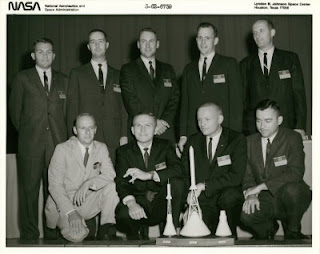HTV released by robotic arm from ISS.
The HTV-3, Japan's third remotely-operated cargo spacecraft, was undocked from the ISS on September 12. Shortly after release by the robotic arm, an unknown malfunction indicated the craft was in danger of possibly colliding with the station. Space History nuts like me may remember years ago when a robot Russian Progress craft accidentally crashed slowly into the Mir space station, causing damage and nearly forcing immediate evacuation of the station.
Fortunately, the automatic programming in the HTV activated and started emergency thrusting away from the station. The automatic abort maneuver did exactly as planned and placed the craft in a safe position away from the station and in place to make a planned de-orbit burn into the atmosphere on Friday.
Farewell, HTV-3.
Japan's mission control quickly re-routed commands through a backup computer system and established full control of the craft. The HTV, filled with station trash and waste, de-orbited Friday and burned up in the atmosphere. It had stayed 47 days connected to the station, after delivering food, supplies, an aquatic habitat for science experiments, and 5 small "Cubesats" which will be released from the station in the near future. It had been nicknamed "Kounotori-3." Four more HTV's are expected to be launched to the station through 2020.

















